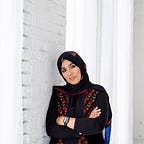#RepresentationMatters:
Meeting the Needs of Arab and Muslim Students in School Spaces
When speaking about identity, the impacts of being Arab or Muslim or being Arab and Muslim are often at odds with an American intersection. The key to meeting the needs of any student is first knowing who the student is beyond the surface. Who are Arab students? Who are Muslim students? If we determine the answers to those questions from a holistic sense, we recognize and name that no group of people who share an identity marker are a monolith; therefore, the role of responsive and equitable teachers is to create opportunities where learning about each other is universal and at the core of the class ethos and community.
One of the things that my students and I agree on in conversations early in the year is that people naturally fear what they do not understand. With red lining and siloing of communities by design, we often do not understand people with backgrounds that differ from our own beyond misrepresentations of who they are in mainstream media. The result of that coupled with a curriculum that is canonical can be divisive to eliminating fear. When fear is elevated, people are not very rational. Their decisions, reactions, and interactions are often driven by that fear. Inclusive classrooms have the opportunities to humanize historically criminalized people; this includes Arabs and Muslims. Ultimately, this eliminates the fear.
Let’s consider a High School English classroom, my home. In an informal survey of attempts to be culturally responsive and representative to Arab bodies in class spaces, many teachers chose The Kite Runner as an anchor text. Khaled Hosseni, the author of the text, is not an Arab; therefore, the novel cannot serve as a mirror to those students. Not only is it a misrepresentation of identity, but it also works to solidify and reinforce stereotypes that shadow who Arabs and Muslims are in the mainstream. A culture of fear has been uplifted and normalized, especially after 9/11 and especially after Trump’s racist policies such as the Muslim Ban.
With the weaponization of equity work and the censoring of many culturally responsive texts across our nation, there is more and more of a need for teachers to codesign with students and plan instruction that allows for the integration of their voices. In doing so, ALL students are creating accurate mirrors of their lived experiences and those mirrors serve as windows for students from varied backgrounds. The more we understand, the less we fear, and ultimately, the stronger the culture and community. Literacy is a form of liberation; this is the reason oppressors have kept marginalized communities from accessing the abilities to read and write for as long as they could. The power of teaching students to reclaim their identities and narratives through storytelling and sharing their whole selves is exponential. Invite your Arab students to use their Arabic tongue and music when creating their mirrors; translanguaging is one of the most validating teacher practices. It tells students, I see you and who you are matters. It gives them permission to leave their duality at the school room door and bring their whole selves into your space. Arab and Muslim students are often hypervisible when it comes to bullying and invisible when it comes to advocacy. These are ways to heal them from that history and release them from the shackles of how things have always been. I tell my students you write for yourself; you create for you. What story do you want to tell and why do you want to tell it? Then I ask them how they would like to tell their stories, since they create for themselves because writing has the power to preserve and heal, they do not need to translate or adhere to a word limit or structure. Some of my most struggling writers become the most powerful voices. Their creativity is reborn. The purpose of the writing process becomes personal. The work to them becomes necessary and in many cases, a healing source of power.
With the advent of ChaptGt and other AI technology, the intrinsic motivation for the work must be planted within students. Technology cannot weave the identity of our learners in the work, only they can. As our role as educators evolves and the world and our students continue to change, so must our practices. We cannot achieve equity without understanding the bodies we share space with and then working with them to determine how to build their repertoire of tools to coexist, to eliminate the fear of others, to use the tools we teach them as sources of power and as agents of change to heal the world we are in. Education must work to heal those that have been traumatized by it at all levels, including our Arab and Muslim students. They are often in a third space even with the loudest equity voices. Let’s right the historic wrongs by shifting practice and policy to integrate every student and every narrative, whether they exist in our spaces or not. Ultimately, schools have the responsibility to serve local and global communities. This is how we begin to do it!
